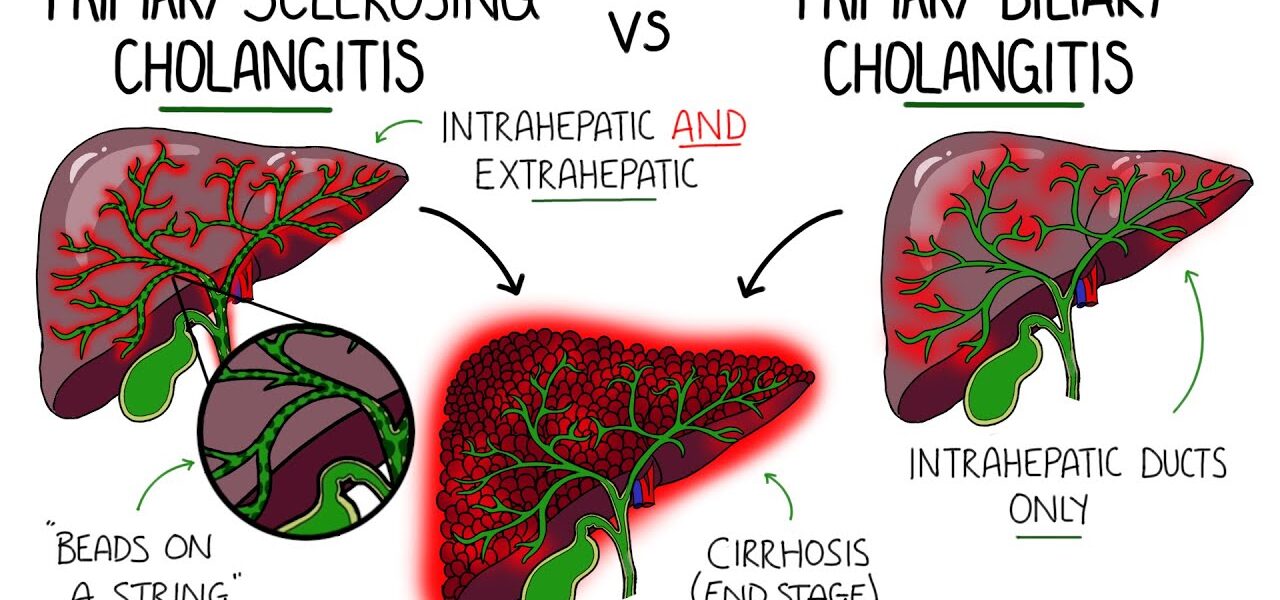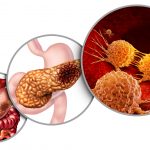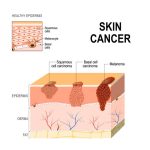Primary biliary cholangitis, previously called primary biliary cirrhosis, is a chronic disease in which the bile ducts in your liver are slowly destroyed.
Bile is a fluid made in your liver. It aids with digestion and helps you absorb certain vitamins. It also helps your body get rid of cholesterol, toxins and worn-out red blood cells. Chronic inflammation in the liver can lead to bile duct damage, irreversible scarring of liver tissue (cirrhosis) and eventually, liver failure.
Although it affects both sexes, primary biliary cholangitis mostly affects women. It’s considered an autoimmune disease, which means your body’s immune system is mistakenly attacking healthy cells and tissue. Researchers think a combination of genetic and environmental factors triggers the disease. It usually develops slowly. At this time, there’s no cure for primary biliary cholangitis, but medication can slow liver damage, especially if treatment begins early.
Symptoms
More than half the people with primary biliary cholangitis do not have any noticeable symptoms when diagnosed. The disease may be diagnosed when blood tests are done for other reasons, such as routine testing. Symptoms eventually develop over the next 5 to 20 years. Those who do have symptoms at diagnosis typically have poorer outcomes.
Common early symptoms include:
- Fatigue
- Itchy skin
Later signs and symptoms may include:
- Dry eyes and mouth
- Pain in the upper right abdomen
- Swelling of the spleen (splenomegaly)
- Bone, muscle or joint (musculoskeletal) pain
- Swollen feet and ankles (edema)
- Buildup of fluid in the abdomen due to liver failure (ascites)
- Fatty deposits (xanthomas) on the skin around the eyes, eyelids or in the creases of the palms, soles, elbows or knees
- Yellowing of the skin and eyes (jaundice)
- Darkening of the skin that’s not related to sun exposure (hyperpigmentation)
- Weak and brittle bones (osteoporosis), which can lead to fractures
- High cholesterol
- Diarrhea, which may include greasy stools (steatorrhea)
- Underactive thyroid (hypothyroidism)
- Weight loss
Causes
It’s not clear what causes primary biliary cholangitis. Many experts consider it an autoimmune disease in which the body turns against its own cells. Researchers believe this autoimmune response may be triggered by environmental and genetic factors.
The liver inflammation seen in primary biliary cholangitis starts when certain types of white blood cells called T cells (T lymphocytes) start to collect in the liver. Normally, these immune cells detect and help defend against germs, such as bacteria and viruses. But in primary biliary cholangitis, they mistakenly destroy the healthy cells lining the small bile ducts in the liver.
Inflammation in the smallest ducts spreads and eventually damages other cells in the liver. As the cells die, they’re replaced by scar tissue (fibrosis) that can lead to cirrhosis. Cirrhosis is scarring of liver tissue that makes it difficult for your liver to work properly.
Risk factors
The following factors may increase your risk of primary biliary cholangitis:
- Sex. Most people with primary biliary cholangitis are women.
- Age. It’s most likely to occur in people 30 to 60 years old.
- Genetics. You’re more likely to get the condition if you have a family member who has or had it.
- Geography. It’s most common in people of northern European descent, but primary biliary cholangitis affects all races.
Researchers think that genetic factors combined with certain environmental factors trigger primary biliary cholangitis. These environmental factors may include:
- Infections, such as a urinary tract infection
- Smoking
- Toxic chemicals
Complications
As liver damage worsens, primary biliary cholangitis can cause serious health problems, including:
- Liver scarring (cirrhosis). Cirrhosis makes it difficult for your liver to work and may lead to liver failure. It indicates the later stage of primary biliary cholangitis. People with primary biliary cholangitis and cirrhosis have a poor prognosis and higher risk of other complications.
- Enlarged veins (varices). When blood flow through the portal vein is slowed or blocked, blood may back up into other veins — usually those in your stomach and esophagus. Increased pressure may cause delicate veins to break open and bleed. Bleeding in the upper stomach or esophagus is a life-threatening emergency that requires immediate medical care.
- Increased pressure in the portal vein (portal hypertension). Blood from your intestine, spleen and pancreas enters your liver through a large blood vessel called the portal vein. When scar tissue from cirrhosis blocks normal blood flow through your liver, blood backs up. This causes increased pressure inside the vein. Also, because blood doesn’t flow normally through your liver, drugs and other toxins aren’t filtered properly from your bloodstream.
- Enlarged spleen (splenomegaly). Your spleen can become swollen with white blood cells and platelets because your body no longer filters toxins out of the bloodstream as it should.
- Gallstones and bile duct stones. If bile cannot flow through the bile ducts, it may harden into stones, causing pain and infection.
- Liver cancer. Liver scarring (cirrhosis) increases your risk of liver cancer. If you have liver scarring, you’ll need regular cancer screening.
- Weak bones (osteoporosis). People with primary biliary cholangitis have an increased risk of weak, brittle bones that may break more easily.
- Vitamin deficiencies. A lack of bile affects your digestive system’s ability to absorb fats and the fat-soluble vitamins, A, D, E and K. Because of this, some people with advanced primary biliary cholangitis may have low levels of these vitamins. These deficiencies can result in a variety of health problems, including night blindness and bleeding disorders.
- High cholesterol (hyperlipidemia). Up to 80% of people with primary biliary cholangitis have high cholesterol.
- Decreased mental function (hepatic encephalopathy). Some people with advanced primary biliary cholangitis and cirrhosis have personality changes and problems with memory and concentration.
- Increased risk of other disease. Primary biliary cholangitis is associated with metabolic or immune system disorders, including thyroid problems, limited scleroderma (CREST syndrome), rheumatoid arthritis, and dry eyes and mouth (Sjogren’s syndrome).
The list of some Primary Biliary Cholangitis medicine:



